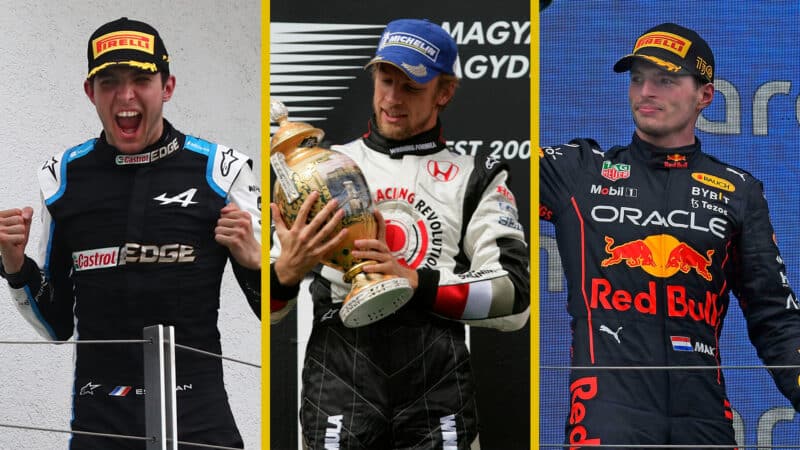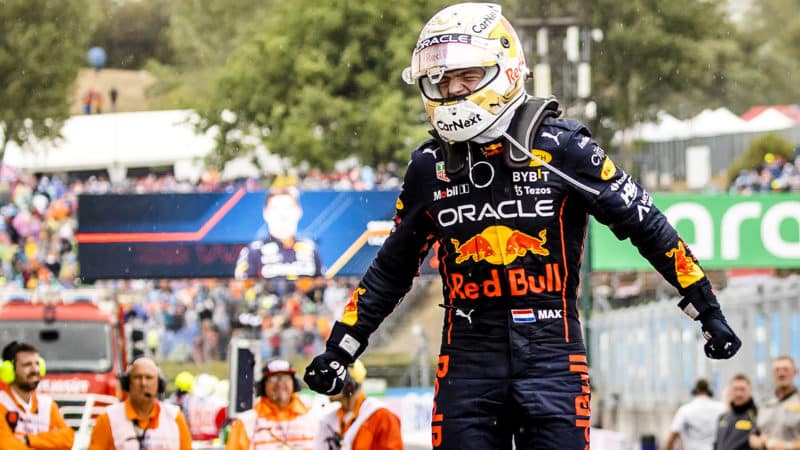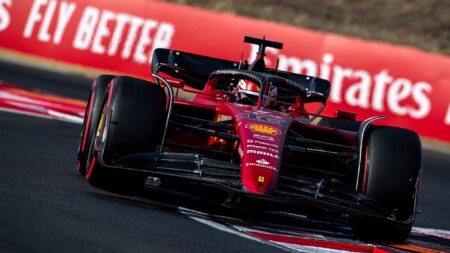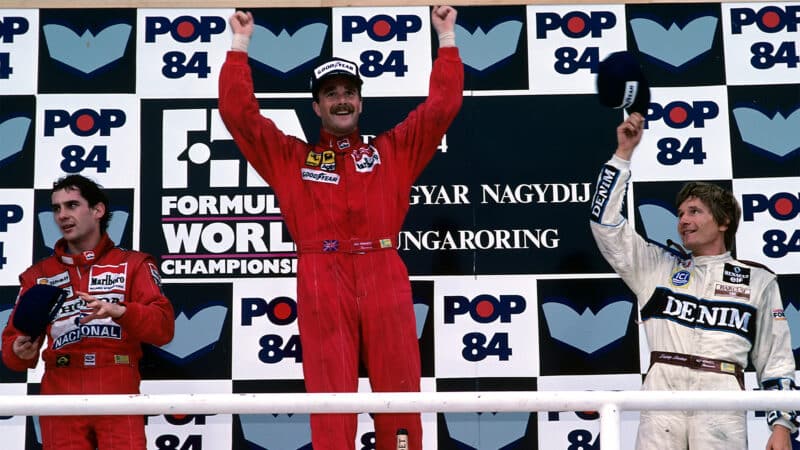Starting on the soft compound, Verstappen picked up a few positions on the opening laps courtesy of the superior machinery underneath him — making the majority of his overtakes under braking at Turn 1 and avoiding contact. By lap 12 he was up to fifth and his calm approach was paying dividends as the race started to come to him. Pitting on lap 16 for a fresh set of medium tyres allowed him to undercut the fourth-placed Lewis Hamilton who pitted his Mercedes three laps later. The decision which ultimately handed the Dutchman the race victory – with as many as 25 laps left to run — came during the second round of pitstops.
Data collected from Friday’s practice sessions had told Red Bull and Verstappen long before any competitive action that the hard tyre was not going to be useable during Sunday’s Grand Prix — mainly due to the fact that it would be incredibly difficult to warm up under the cooler conditions which plagued the weekend’s running. Their suspicions were confirmed between lap 21-23 by the Alpines of Fernando Alonso and Esteban Ocon, which had been running as high as a fifth and sixth on the medium compound before a disastrous middle stint on the hards saw them drop back to tenth and eleventh by lap 31.
Even after seeing the struggles of Alpine, Ferrari still chose to pit its race-leader — Charles Leclerc — for a set of hard tyres with just 30 laps. He effectively became a sitting duck as he failed to get his tyres up to their optimum temperature and Verstappen passed for the lead on lap 41 — after pitting for a fresh set of medium compound tyres two laps earlier. Verstappen had to repeat the move four laps later after a spin, and from there was left to race to the chequered flag at a relative canter.
2021 — Esteban Ocon
Won from 8th
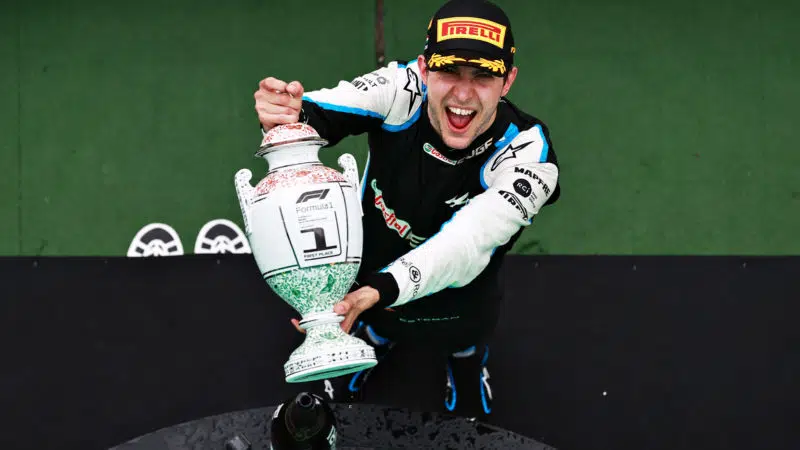
A benefactor of chaos
Mark Thompson/Getty Images
A chaotic start to the 2021 Hungarian Grand Prix gave Esteban Ocon a rare chance to hit the front, but it was a sequence of perfectly timed calls that ultimately allowed him to stay there.
On a wet track, as the lights went out, the second-placed Mercedes of Valtteri Bottas got away slowly and was pushed down to sixth. This mistake would then be magnified less than 200m later, as the Finn misjudged his braking zone and ploughed into the back of Lando Norris‘s McLaren — kickstarting the world’s most expensive game of dominoes as the pair crashed into the side of both Red Bulls. In the same corner, Lance Stroll also hit the brakes too late, jumped the kerb and careened into the side of Charles Leclerc’s Ferrari which was catapaulted into the side of Daniel Ricciardo‘s McLaren.
In total, seven cars were involved in the Turn 1 melee — four of which were retired immediately. But all the while, from his mid-pack eighth-place grid slot, Ocon remained calm in the face of chaos and navigated his way through the tumult. As he emerged at the corner exit, he was second and a red flag ensured he’d stay there for the restart.
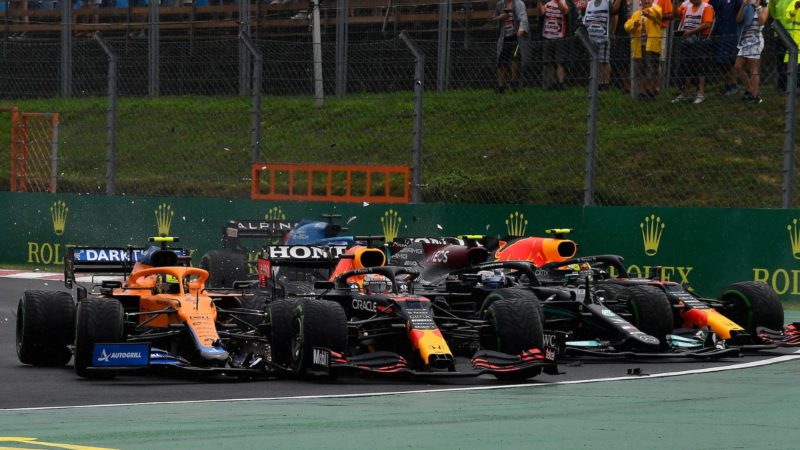
This lap one crash set up a manic Hungarian GP
Grand Prix Photo
But shortly before racing got back underway, Hungary’s unpredictable weather began to come into play once again.
Blazing sunshine had quickly dried the track, so after completing their warm-up lap, 14 of the 15 remaining runners pitted for slick tyres. Lewis Hamilton was the only exception. While the rest of the grid piled into the pitlane, the Mercedes lined up on the grid for the restart.
Once again, Ocon’s calm demeanour was his greatest asset as he navigated the packed pitlane and emerged third behind Hamilton and the Williams of George Russell — which soon became second after Russell was told to drop back due to a pitlane infraction.
Hamilton inevitably then pitted, and Ocon inherited the lead, putting up a stout defence against the Aston Martin of Sebastian Vettel for the remaining 66 laps.
The Frenchman’s passage to the top of the podium was also eased by his team-mate Fernando Alonso, who put up a spirited defence of fourth place against the storming Hamilton from lap 63-65, delaying his progress to the front, where the Mercedes’ superior pace would have threatened Ocon’s win.
2006 — Jenson Button
Won from 14th
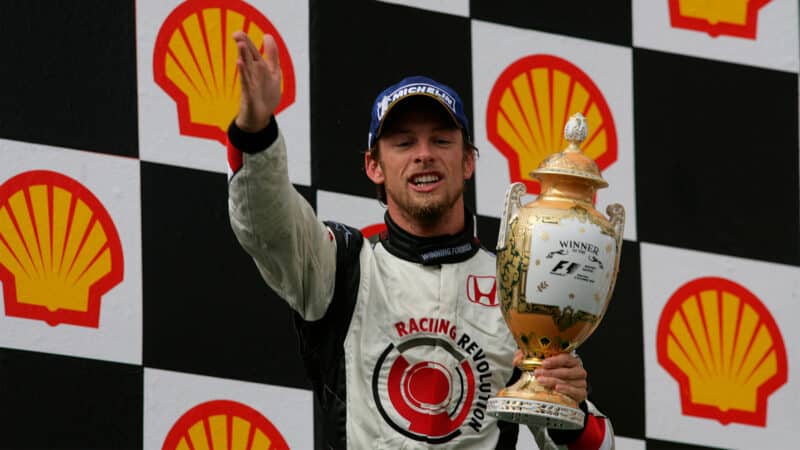
A brilliant drive, courtesy of a cool head
Grand Prix Photo
Jenson Button‘s first F1 win at the 2006 Hungarian GP was arguably the ultimate expression of composure. While the field around him stumbled, span and skated off the circuit, the Briton ran almost mistake-free from lights out to the chequered flag.
Racing for Honda, Button had been sporadically competitive over the course of the season, with a podium finish in Malaysia followed by a sixth-place finish in Spain and a fourth-place finish in Germany, but Hungary didn’t look promising after he qualified a distant 14th. However, heavy rain clouds rolled in on raceday and with them, the legend of Button’s extraordinary instincts in the wet.
In initially damp conditions, Button was up to fourth by lap six of Sunday’s race — making up several places as drivers ahead of him crashed or span out on the slippery track.
